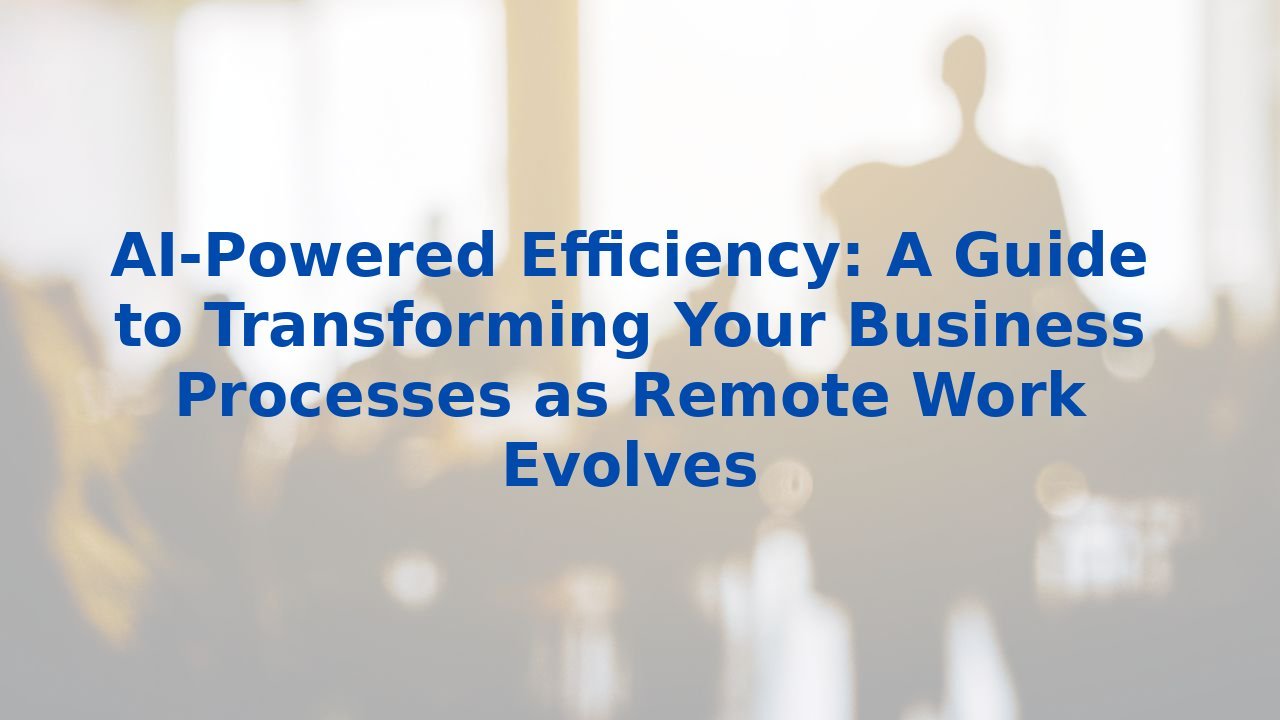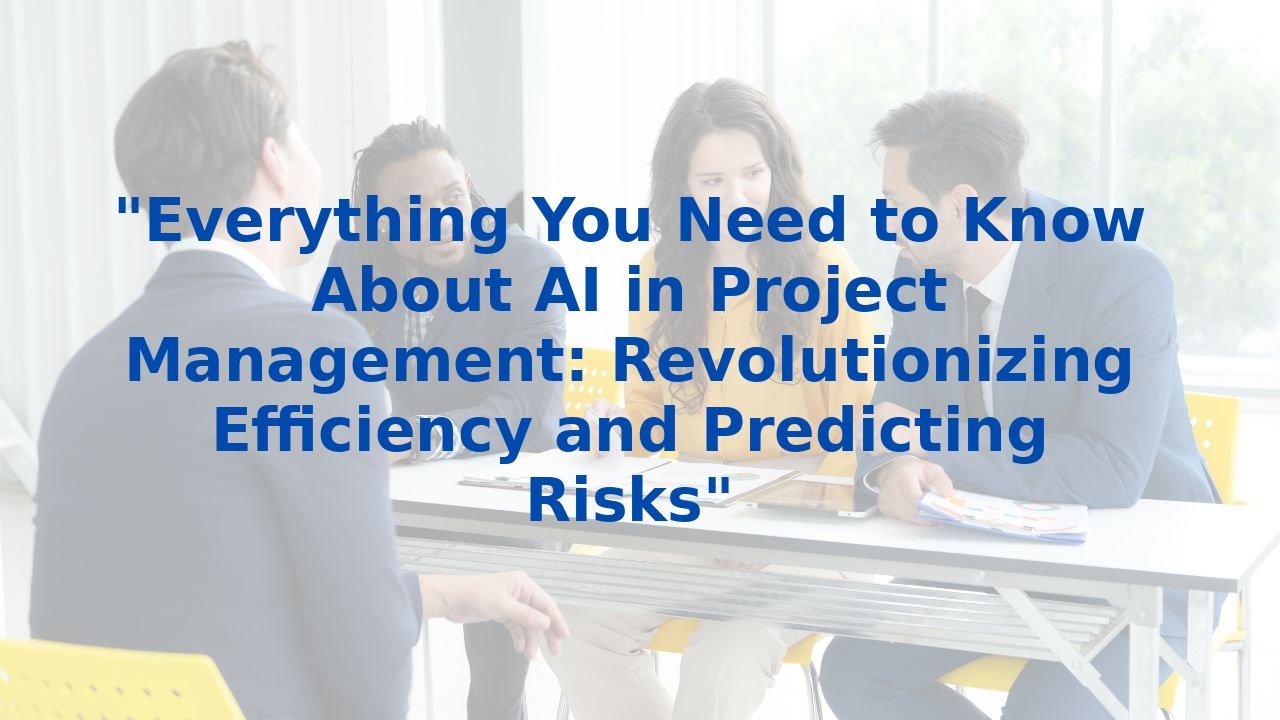AI-Powered Efficiency: A Guide to Transforming Your Business Processes as Remote Work Evolves
AI-Powered Efficiency: A Guide to Transforming Your Business Processes as Remote Work Evolves
In a world where remote work has transitioned from a temporary solution to a long-term strategy, businesses are reimagining how they operate. As organizations navigate this evolution, the integration of artificial intelligence (AI) has emerged as a game-changer. This post delves into how AI enhances business processes, driving efficiency, and unlocking new realms of productivity.
1. Increasing Efficiency
AI stands at the forefront of operational excellence, reshaping how tasks are performed and transforming workflows. By automating mundane and time-consuming tasks, AI allows companies to focus their energy on what truly matters. Here’s how AI contributes to enhanced efficiency:
- Task Automation: Consider the potential of automating data entry, scheduling, or even customer inquiries. With AI chatbots capable of addressing queries and troubleshooting relief, organizations can redirect human resources toward more strategic initiatives.
- Process Optimization: Real-time analytics help identify bottlenecks that hinder productivity. AI can scrutinize workflows to uncover inefficiencies, guiding businesses toward streamlining efforts. For instance, AI’s predictive capabilities can anticipate supply chain disruptions, enabling proactive adjustments that ensure seamless operations.
- Data Analysis: The ability to process vast amounts of data allows organizations to unlock insights previously hidden from view. AI facilitates data-driven decision-making, enabling stakeholders to understand workforce sentiments and align strategies accordingly.
2. Enhancing Safety
Efficiency isn’t solely about productivity; it’s also about creating an environment where employees feel safe and secure. AI plays a pivotal role in enhancing safety protocols across various industries:
- Fatigue Detection: AI technology can analyze biometric signals to recognize signs of fatigue among employees. This function is particularly vital in heavy-duty sectors, where alertness is key to preventing accidents.
- Driver Monitoring: In transportation, AI systems can monitor drivers in real-time. Addressing driver fatigue not only safeguards lives but enhances operational reliability. The implementation of such technologies can significantly reduce the rate of accidents.
- Anomaly Detection: Predictive capabilities extend to health and safety, allowing AI to monitor machinery and detect abnormalities that may signal impending failure. By enabling early intervention, AI fosters a safer workplace.
3. Improving Reliability
The reliability of processes is paramount in driving organizational success. AI contributes significantly to mitigating errors, ensuring precision and consistency:
- Error Reduction: AI systems can efficiently execute administrative tasks and review data, vastly reducing human errors that can occur in traditional processes. This element of accuracy builds trust and ensures compliance with industry standards.
- Predictive Maintenance: Avoiding disruptive breakdowns is achievable through predictive maintenance powered by AI. By analyzing patterns, AI can forecast potential equipment failures and scheduling maintenance before issues arise.
- Quality Control: In manufacturing, AI solutions can monitor quality in real-time. By analyzing data streams, organizations can swiftly identify defects, ensuring that standards are met without compromising timelines.
4. Benefits of Training Employees for AI
While AI offers profound advantages, the human element cannot be overlooked. For organizations to truly excel in the age of AI, investing in employee training is essential:
- Skill Enhancement: Upgrading workforce skills through AI training enables employees to handle advanced tasks. This transformation not only empowers individuals but elevates the organization as a whole.
- Adoption and Integration: Proper training equips employees with the knowledge to leverage AI fully. This seamless integration leads to smoother operations and better decision-making capabilities, enhancing overall productivity.
- Ethical Considerations: An understanding of the ethical dimensions of AI usage forms the foundation for responsible implementation. Training provisions reinforce the importance of integrity in handling AI technologies.
Conclusion
In an era where remote work reshapes business landscapes, embracing AI becomes imperative for organizations seeking to thrive. The journey toward enhanced efficiency, safety, and reliability begins with a concerted effort to integrate AI into everyday processes. However, this technological shift should go hand in hand with comprehensive employee training, creating a workforce that is not only adept in using AI tools but also attuned to the ethical dimensions of their applications.
As businesses continue to evolve, investing in AI technology and facilitating employee training is more than just a choice; it is a necessity for sustained growth, competitive advantage, and innovation. Now is the time to pivot towards a future where AI-powered efficiency unlocks the full potential of your organization.



